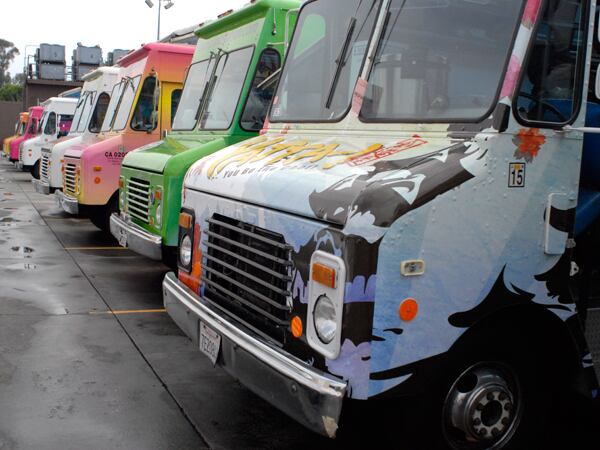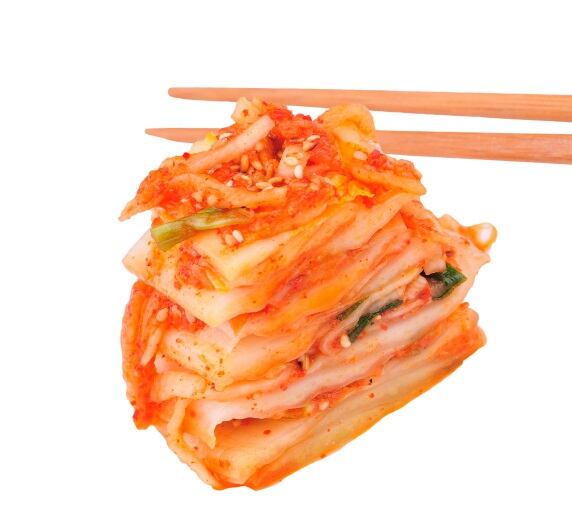Three trends that are likely to influence the breakfast market in 2014 are sophisticated handheld items inspired by the food truck movement, Asian flavors and Latin American/Southwestern-inspired foods, according to research compiled by the American Egg Board.
Food trucks inspire gourmet, on-the-go breakfast; tuned-in Millennials driving the trend
Food trucks now comprise a $1 billion industry, according to IBISWorld, and small business experts predict they will soon generate 3 to 4% of total restaurant revenue.
A growing segment of the category is now devoted specifically to the breakfast daypart, with unique (and many handheld) offerings including sandwiches pairing fried or scrambled eggs and pork belly with upscale condiments like caper aioli and sriricha mayo on everything from pretzel bread to brioche; build-your-own breakfast burritos; and savory waffles topped with eggs.

Competition between quick-service restaurants (QSR) and food trucks is heating up, leading some QSR chains to launch their own trucks. Indeed, 2013 NPD research showed that in the absence of a food truck, nearly half of those surveyed would have ordered from a QSR. While convenience is an advantage for both venues, 41% of consumers also prefer the uniqueness of food truck offerings.
Food trucks also benefit from the flexibility of changing menu items on a whim, effectively creating an accelerated incubator for new items and trends, spawning more atypical combinations and applications. This positions truck operators as the ones to watch for innovation by restaurants and food manufacturers alike.
In its 2013 Food Trucks, U.S. report, Mintel shows that Millennials are the driving force behind food truck sales, which explains in part their tendency to locate where Millennials congregate (universities, late-night bars), communicate schedules via social media, and pair convenience with cultural, indulgent fare.
Those looking to attract this segment can take inspiration from any of these marketing efforts that seem to have captured the zeitgeist of an eating generation.
East meets West captures desire for less processed options, exotic flavors
In its annual chef survey, the National Restaurant Association found ethnic-inspired breakfast items were among the top 20 “hot” food trends at US. restaurants for the second year in a row. Among ethnic cuisines, Korean came in at No. 2 and Southeast Asian earned the No. 3 spot.
Not only have the number of Asians in the US population swelled 43% between 2000 and 2010, but the cuisine is increasingly permeating US menus. Nine percent of the menu items in Mintel’s menu item database are some type of Asian cuisine. Moreover, 2013 Mintel research shows that 70% of consumers have eaten some type of Asian food away from home in the past month.
Unsurprisingly, food manufacturers have been ramping up their production of Asian-inspired breakfast foods. Items like Earnest Eats’ Hot & Fit Asia Blend Cereal with mango, green tea and sesame seeds, and Tarté Foods’ line of Asian yogurts are only two recent examples.

Asian flavors are finding their way into mainstream breakfast dishes as well. Examples include Sriracha (Thai), often paired with fried eggs, seafood and meats; congee (China), a water porridge served sweet or savory; kimchi (Korea), garlicky fermented vegetables; pho (Vietnam), a soup of noodles, herbs and meat; and miso soup (Japan).
Mintel says Asian cuisine is now among the top geographical claims on fast casual menus. Sriracha visibility has gone truly mainstream, with Bruegger’s Bagels menuing a Sriracha egg sandwich and Subway offering Sriracha sauce on any sandwich.
Other flavors and components are being woven into traditional American items as well as in fusion applications. Some restaurant applications include poutine topped with eggs and pho gravy, mushroom congee with soft-boiled egg, omelet with teriyaki glaze, and kimchi with brown rice and sunny-side up eggs.
Once again, Millennials are at the forefront of this trend, as Technomic’s 2013 Breakfast Trend Report notes that 39% of consumers aged 18 to 24 and 46% of those aged 25 to 34 are looking for more ethnic items and flavors to be offered at breakfast.
The breakfast burrito grows up
This year’s National Restaurant Association survey of American Culinary Federation chefs showed ethnic-inspired breakfast items were still among the top “hot” US food trends, with Latin foods leading the charge as a longtime favorite for Americans.
According to consumer research firm Packaged Facts, US sales of Hispanic foods and beverages totaled $8 billion in 2012 and are expected to reach $11 billion by 2017, which is unsurprising given that the US Hispanic population currently comprises 17% of the total.
Food manufacturers are vying to get their share of those figures with items like the El Monterey Breakfast Supreme Burrito line using sausage, bacon, cheese, potatoes, tomatoes and chilies with scrambled eggs. Jimmy Dean Delights Southwest Style Breakfast Bowl features chicken chorizo, chilies and onions, and Chi-Chi’s Breakfast Burritos are filled with eggs, bacon, hash browns and cheeses.
Even the most “American” chains offer Southwestern- and Latin American-inspired flavors at breakfast, such as McDonald’s (sausage burrito), Burger King (Southwestern breakfast burrito) and Jack in the Box (steak and egg burrito). Others are getting more creative, such as Sonic, with its salsa verde burrito combining scrambled eggs, bacon, onions, cheese, tots and roasted tomatillo salsa verde; an Bruegger’s Western egg bagel sandwich comprising egg, bacon, Cheddar cheese, chipotle sauce, bell peppers, tomatoes and red onion.
More sophisticated flavors and preparations common to Latin America are appearing on independent restaurant menus, including baked poblano peppers, mole, pumpkin, chilaquiles (fried and salsa soaked tortillas with scrambled eggs), chorizo, queso fundido, green chiles and corn cakes.
Hispanic flavors’ marketability lies largely in their unique ability to infuse a little boldness into traditional comfort breakfast items, creating new experiences out of familiar foods. Yet—like pizza and pasta—tortillas, tacos and burritos have become so mainstream most Americans no longer think of them as “ethnic.”
Despite operators' initial trepidation about tinkering with the habitual breakfast menu, the Latin flavor trend has matured on breakfast menus, too, as operators mine their continued appeal to the adventurous American palate. According to Datassential, breakfast burritos are menued by 12.8% more operators than four years ago, and chorizo penetration has risen by 18.2% in the same time period.
